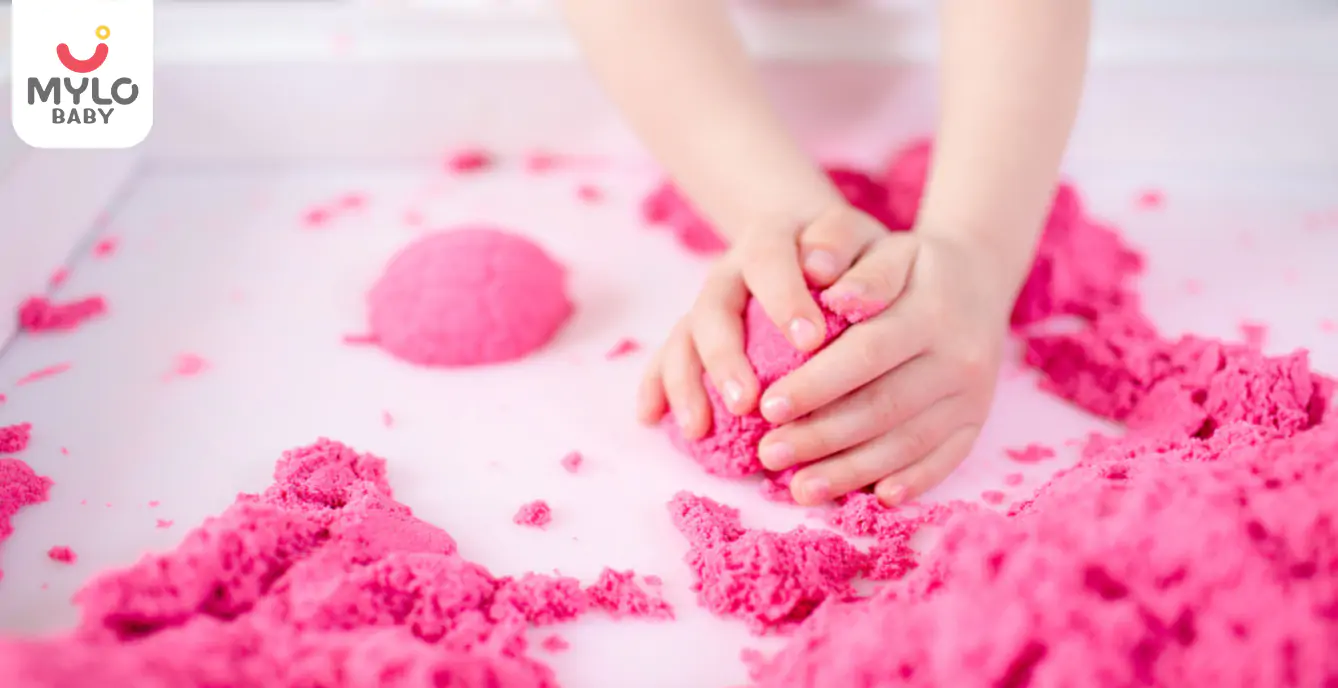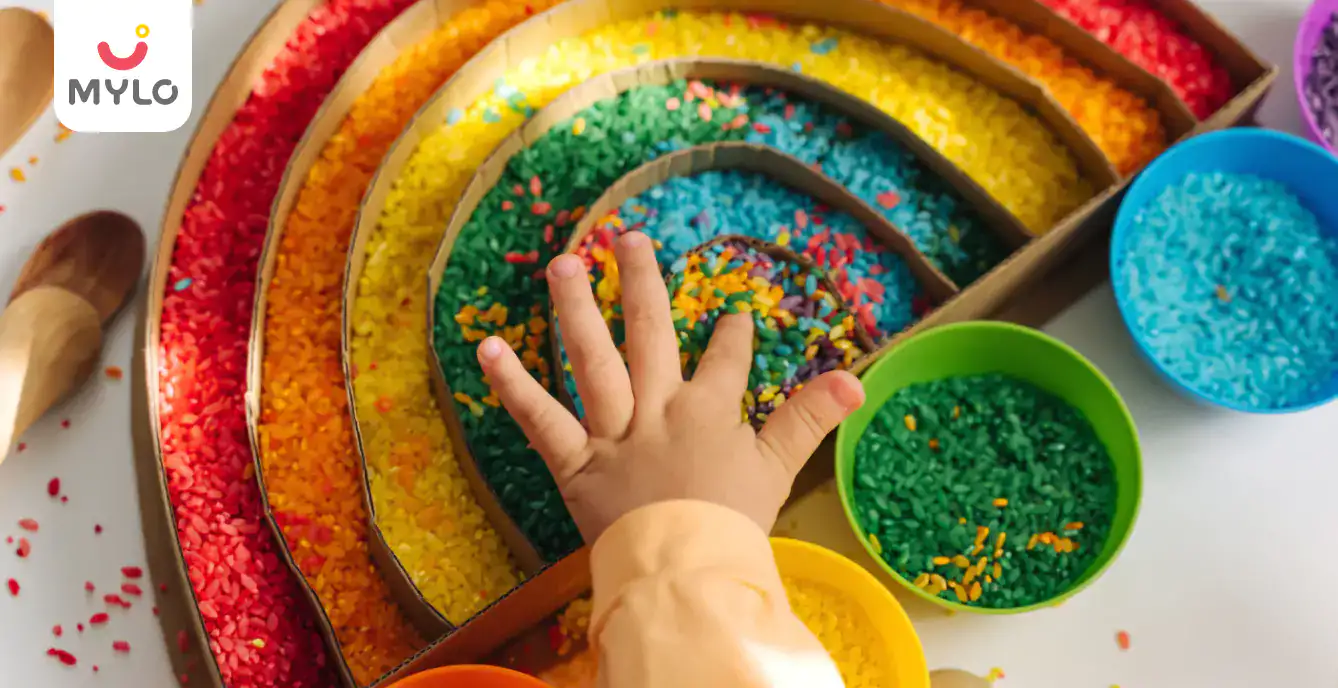Home

Breast Pump 101: The Ultimate Guide to Stress-Free Pumping Sessions
In this Article

Baby Care
Breast Pump 101: The Ultimate Guide to Stress-Free Pumping Sessions
Updated on 17 July 2023
As a new mom, Aastha had read countless books and attended numerous classes to prepare for motherhood. However, nothing quite prepared her for balancing breastfeeding, household chores and work. Despite her best efforts, she struggled to find the time to breastfeed her baby throughout the day. That’s when a friend recommended her to use a breast pump. But how to choose the right breast pump and how to go on about pumping?
So, if you are a new mom like Aastha and wondering the same, then in this article, we will discuss everything you need to know about breast pumps, including the benefits of pumping breast milk, the different types of breast pumps, how to find the right breast pump for you, how to pump breast milk and how to store breast milk after pumping.
What are the Benefits of Pumping Breast Milk?
Pumping breast milk offers several benefits, both for you and your baby. Here are some of the benefits of pumping breast milk:
1. You Can Provide Your Baby with Breast Milk Even When You're Away
Whether you're going back to work or you're simply going out for a few hours, pumping breast milk can help ensure that your baby still gets the nutrition they need even when you're not around.
2. You Can Share the Feeding Duties with Your Partner
Pumping breast milk allows your partner to take over some of the feeding duties, which can help you get some much-needed rest and relaxation.
3. You Can Increase Your Milk Supply
Pumping breast milk can help stimulate your milk supply, which can be helpful if you're struggling with low milk supply.
4. You Can Reduce Engorgement
If you're experiencing breast engorgement, pumping breast milk can help relieve the discomfort and reduce the swelling.
5. You Can Build a Breast Milk Reserve
Pumping breast milk can help you build up a reserve of breast milk that you can use in case of emergencies or unexpected events.
6. You Can Maintain Your Milk Supply
If your baby isn't feeding regularly, pumping breast milk can help maintain your milk supply and prevent it from decreasing.
7. You Can Save Money
Using a breast pump can help you save money on formula and other feeding supplies.
What are the Types of Breast Pumps?
There are three main types of breast pumps: manual, electric, and battery-operated. Here's a brief overview of each type:
1. Manual Breast Pumps
Manual breast pumps are operated by hand, which means you'll need to manually pump the milk out of your breasts. They're usually small and compact, making them easy to carry with you.
2. Electric Breast Pumps
Electric breast pumps are powered by electricity and come in a variety of sizes and styles, so you can choose one that meets your needs.
3. Battery-Operated Breast Pumps
Battery-operated breast pumps are similar to electric breast pumps, but they're powered by batteries instead of electricity. They're usually smaller and more portable than electric breast pumps.
How to Choose the Right Breast Pump for You?
Choosing the right breast pump can make all the difference when it comes to pumping breast milk. Here are some things to consider when choosing a breast pump:
You may also like : Does A Manual Breast Pump Help to Pump More Milk?
1. Your Lifestyle
Consider your lifestyle and how often you'll need to pump breast milk. If you're going back to work, you may need to pump several times a day, so an electric breast pump may be the best option.
2. Your Budget
Breast pumps can range in price from less than Rs 500 to several thousand. Consider your budget and how much you're willing to spend on a breast pump.
3. Your Comfort
Comfort is key when it comes to pumping breast milk. Look for a breast pump that has soft cups and adjustable suction levels.
4. Your Breast Size
Breast pumps come in different sizes, so consider your breast size when choosing a breast pump. Look for a breast pump that comes with different cup sizes or adjustable cups.
How to Pump Breast Milk: Step-by-Step Guide
Pumping breast milk may seem daunting at first, but with a little practice, you'll become a pro in no time. Here's a step-by-step guide to pumping breast milk:
1. Wash Your Hands
Before you start pumping, wash your hands thoroughly with soap and water.
2. Assemble the Breast Pump
Assemble the breast pump according to the manufacturer's instructions.
3. Find a Comfortable Position
Find a comfortable position, such as sitting in a chair or on a bed.
4. Place the Cups on Your Breasts
Place the cups on your breasts, making sure they fit snugly.
5. Turn on the Pump
Turn on the pump and adjust the suction level to a comfortable setting.
6. Pump for 15-20 Minutes
Pump for 15-20 minutes, or until your breasts feel empty.
7. Store the Milk
Store the milk in a sterilized container.
Tips for Stress-Free Pumping Sessions
Pumping breast milk can be stressful, but with these tips, you can make your pumping sessions more comfortable and stress-free:
1. Relax
Relax your mind and body during pumping sessions. Listen to music or practice deep breathing exercises.
2. Stay Hydrated
Drink plenty of water before and during pumping.
3. Use a Timer
Set a timer to remind you to switch sides and to ensure you are pumping for the recommended amount of time.
4. Listen to Music or Watch TV
Listening to music or watching TV can help you relax and make the pumping session more enjoyable.
5. Have a Support System
Having a support system can help you feel less stressed and more comfortable while pumping.
How to Store Breast Milk After Pumping?
Storing breast milk correctly is essential to ensure that it stays fresh and safe for your baby. Here are some tips for storing breast milk after pumping:
1. Use Sterilized Containers
Use sterilized containers to store breast milk.
2. Store in Small Portions
Store breast milk in small portions to avoid wasting any milk.
3. Label and Date
Label and date the breast milk container to ensure you use the oldest milk first.
4. Store in the Fridge or Freezer
Store breast milk in the fridge for up to four days or in the freezer for up to six months.
5. Thawing Breast Milk
Thaw breast milk in the fridge or by placing the container in a bowl of warm water.
Are There Any Side Effects of Pumping Breast Milk?
Pumping breast milk is generally safe, but there may be some side effects. Here are some of the most common side effects of pumping breast milk:
1. Sore Nipples
Pumping can cause sore nipples, which can be uncomfortable.
2. Reduced Milk Supply
In some cases, pumping breast milk can lead to a reduced milk supply.
3. Mastitis
Mastitis is a painful breast infection that can occur when milk is not adequately removed from the breast.
4. Clogged Milk Ducts
Clogged milk ducts can occur when milk is not adequately removed from the breast, causing pain and discomfort.
Key Takeaways
Breast pump can be a lifesaver for working mothers who want to provide breast milk to their child, even when they are away. When choosing the right breast pump for you, consider factors such as frequency of pumping, time available for pumping, comfort, portability, and budget. Pumping breast milk is a straightforward process, but it's essential to store the milk correctly to ensure that it stays fresh and safe for your baby.
References
1. Meier PP, Patel AL, Hoban R, Engstrom JL. (2016). Which breast pump for which mother: an evidence-based approach to individualizing breast pump technology. J Perinatol.
2. Zhang F, Yang Y, Bai T, Sun L, Sun M. (2018). Effect of pumping pressure on onset of lactation after caesarean section: A randomized controlled study. Matern Child Nutr.

Manual Breast Pump With Bottle (150 ml)
Anti Colic & BPA Free | Compact & Lightweight | Easy to hold | Easy to Clean
₹ 827

4.5
(6869)


24300 Users bought



Written by
Anandita Sharma
Drawing on more than a decade of expertise in administration, Anandita Sharma currently serves as a content operations e
Read MoreGet baby's diet chart, and growth tips

Related Articles
Related Questions
Influenza and boostrix injection kisiko laga hai kya 8 month pregnancy me and q lagta hai ye plz reply me

Hai.... My last period was in feb 24. I tested in 40 th day morning 3:30 .. That is faint line .. I conculed mylo thz app also.... And I asked tha dr wait for 3 to 5 days ... Im also waiting ... Then I test today 4:15 test is sooooo faint ... And I feel in ma body no pregnancy symptoms. What can I do .

Baby kicks KB Marta hai Plz tell mi

PCOD kya hota hai

How to detect pcos

Related Topics
RECENTLY PUBLISHED ARTICLES
our most recent articles

Lactose Intolerance
Lactose Intolerance in Babies: A Parent’s Guide to Identifying and Managing it

Medical Procedures
TESA IVF: How This Procedure Can Help You Achieve Your Dream of Parenthood

Sensory Development
How Can You Encourage Sensory Play for Your Baby and What are Its Benefits?

IVF Pregnancy
After How Many Weeks IVF Pregnancy Is Safe: Understanding The Ideal Timeline

Exploring the Senses: 9 Incredible Benefits of Sensory Play for Your Child's Development

Childproofing
The Ultimate Guide to Childproofing Your Home
- Start Their Love for Reading Early: The Best Books for Baby's First Library
- CMPA (Cow's Milk Protein Allergy): Identifying Symptoms and Understanding Treatment
- Birth Control Options While Breastfeeding: Balancing Parenthood and Contraception
- Period During Breastfeeding What Every New Mother Should Know
- Role of Stories and Rhymes in Your Baby’s Brain Development
- Intracytoplasmic Sperm Injection (ICSI) How It Can Help Treat Male Infertility
- Baby Sleeping While Breastfeeding: Understanding the Causes and Solutions
- Lump in Breast During Breastfeeding How to Identify, Treat, and Prevent Lump Formation
- Understanding Down Syndrome: A Comprehensive Guide for Parents
- No Breast Milk After Delivery: What to Do & What are the Factors Responsible
- Lactation Failure: A Comprehensive Guide to Understanding the Causes and Solutions
- Breast Pain During Pregnancy: What to Expect and How to Find Relief
- Baby Spit Up: The Ultimate Guide to Causes, Prevention, and Management
- Unexplained Infertility: Breaking Down the Factors and Finding Solutions


AWARDS AND RECOGNITION

Mylo wins Forbes D2C Disruptor award

Mylo wins The Economic Times Promising Brands 2022
AS SEEN IN
















- Mylo Care: Effective and science-backed personal care and wellness solutions for a joyful you.
- Mylo Baby: Science-backed, gentle and effective personal care & hygiene range for your little one.
- Mylo Community: Trusted and empathetic community of 10mn+ parents and experts.
Product Categories
baby carrier | baby soap | baby wipes | stretch marks cream | baby cream | baby shampoo | baby massage oil | baby hair oil | stretch marks oil | baby body wash | baby powder | baby lotion | diaper rash cream | newborn diapers | teether | baby kajal | baby diapers | cloth diapers |








